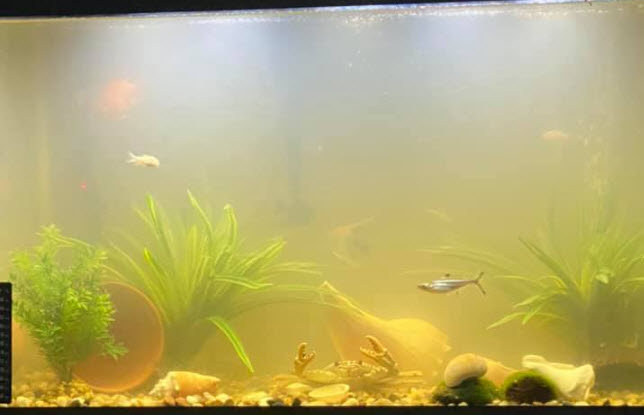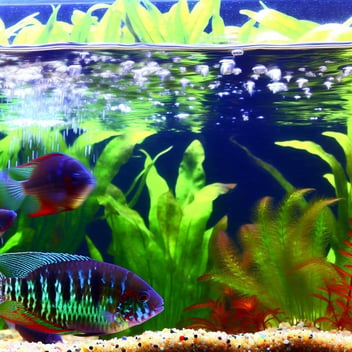Discover effective tips and tricks for fast fish tank cycling to create a healthy environment for your aquatic pets.
The Importance of Fish Tank Cycling
Cycling a fish tank is a crucial step in establishing a healthy environment for your aquatic pets. It involves establishing a colony of beneficial bacteria that will break down harmful ammonia and nitrite into less toxic nitrate. This process is essential for the overall well-being of your fish.
Fish tank cycling also helps to stabilize the water parameters, ensuring a stable and safe habitat for your fish. Without proper cycling, ammonia and nitrite levels can quickly rise, leading to stress, illness, and even death among your fish.
By understanding the importance of fish tank cycling, you can take the necessary steps to create a thriving and balanced ecosystem for your aquatic pets.
Choosing the Right Substrate
Selecting the right substrate is an important factor in cycling your fish tank quickly. The substrate serves as a home for beneficial bacteria, providing them with a surface area to colonize and thrive. It also helps to establish a natural and aesthetically pleasing environment for your fish.
When choosing a substrate, opt for one that is specifically designed for aquarium use. Gravel, sand, or a combination of both are common choices. Ensure that the substrate is thoroughly rinsed before adding it to your tank to remove any debris or dust. Additionally, consider the specific needs of your fish species when selecting the substrate, as some may prefer sandy bottoms while others may require a coarser substrate for burrowing.
By selecting the right substrate, you can create an ideal environment for the beneficial bacteria to establish and accelerate the cycling process.
Using Beneficial Bacteria
Introducing beneficial bacteria into your fish tank can significantly speed up the cycling process. These bacteria play a vital role in converting toxic ammonia and nitrite into less harmful nitrate.
One way to introduce beneficial bacteria is by using a bacterial supplement or starter culture specifically designed for aquarium use. These products contain live bacteria that can quickly colonize your tank and establish a healthy bacterial population. Follow the instructions provided by the manufacturer to ensure proper dosage and application.
Another method is to seed your tank with beneficial bacteria from an established aquarium. This can be done by obtaining some filter media, substrate, or decorations from a well-cycled tank and adding them to your own tank. The established bacteria will help kick-start the cycling process in your tank.
By using beneficial bacteria, you can significantly reduce the time it takes for your fish tank to cycle and create a stable and healthy environment for your fish.
Monitoring Water Parameters
Regularly monitoring the water parameters is essential during the cycling process. This allows you to ensure that the conditions in the tank are optimal for the growth and establishment of beneficial bacteria.
The key parameters to monitor include ammonia, nitrite, nitrate, pH, and temperature. Ammonia and nitrite levels should be closely monitored, as they are toxic to fish. Ideally, you want ammonia and nitrite levels to be at zero, indicating that the beneficial bacteria are effectively breaking down these compounds.
Additionally, monitoring nitrate levels is important, as high levels of nitrate can also be harmful to fish. Regular water changes can help keep nitrate levels in check.
Maintaining a stable pH and temperature is also crucial for the well-being of your aquatic pets. Sudden fluctuations in these parameters can stress fish and hamper the cycling process. Use a reliable test kit to regularly monitor these parameters and make necessary adjustments if needed.
By closely monitoring water parameters, you can ensure that the cycling process is progressing smoothly and make any necessary adjustments to create an optimal environment for your fish.
Accelerating Cycling with Live Plants
Live plants can play a significant role in accelerating the cycling process of your fish tank. They provide additional surfaces for beneficial bacteria to colonize and absorb excess nutrients, helping to maintain water quality.
When selecting live plants for your tank, consider species that are known to be hardy and well-suited for aquarium conditions. Plants like Anubias, Java Fern, and Amazon Sword are popular choices. Ensure that the plants are properly rooted in the substrate and receive adequate lighting and nutrients.
In addition to aiding in the cycling process, live plants also offer numerous benefits for your fish. They provide shelter, oxygenate the water, and can even help reduce algae growth.
By incorporating live plants into your fish tank, you can create a natural and balanced ecosystem while accelerating the cycling process.
Additional Resources:
Aquarium Care A Complete Guide



.jpg?width=352&name=Live%20Aquarium%20Plant%20FA%20(1).jpg)


Leave a Comment